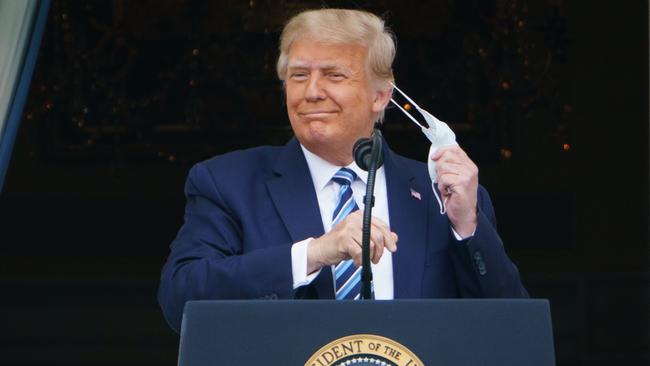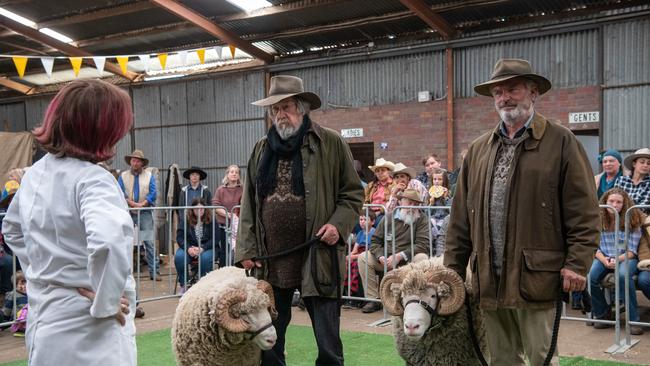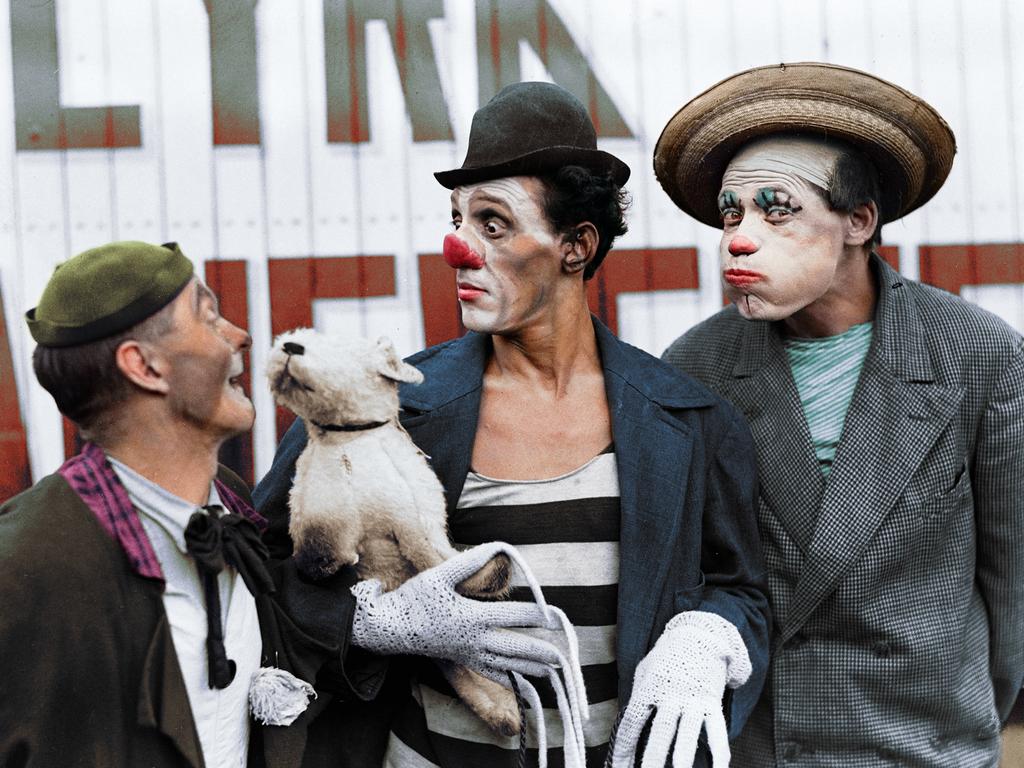
The title of this documentary, sure to be one of the first of many on the COVID-19 pandemic, comes from Donald Trump. “We have it totally under control. It’s going to be just fine.”
The US President said that soon after what the filmmakers call the “day of reckoning”: January 20, 2020, when the first cases of coronavirus were identified in the US and South Korea.
That same-day diagnosis means the two nations can be compared with each other. The filmmakers do this, but not hyperbolically or dogmatically. The numbers speak loudly enough. At the time of writing the death toll was 225,000 in the US and 457 in South Korea.
This movie was written and co-directed by Alex Gibney, who won an Oscar for his 2006 documentary Taxi to the Dark Side, about the 2002 death of an Afghanistani taxi driver at Bagram Air Force Base. His other award-winning films include Mea Maxima Culpa: Silence in the House of God and Going Clear: Scientology and the Prison of Belief.
It is no coincidence that Totally Under Control has been released in the lead-up to the presidential election on November 3.
Gibney has described the two-hour movie as a “report card” that he hopes voters will read before they cast their ballots.
Yet, while this movie interrogates Trump and his closest advisers, it is not baldly partisan. The divide that is explored is that between politics and science.
Trump, the filmmakers believe, has no time for science. They also duly criticise the administration of his Democratic predecessor, Barack Obama, for its failures during previous disease outbreaks, such as H1NI and the Ebola virus.
“I don’t think it’s about a Democrat or Republican. It’s about Trump,” co-director Ophelia Harutyunyan said in an interview with Vanity Fair. “I don’t think we can say, ‘If there was the Democratic president, it would have been better.’’’
Gibney, Harutyunyan and Suzanne Hillinger made this film semi-undercover from April. They directed it remotely, including by sending one-person camera crews to their interview subjects and interviewing them via digital platforms.
This is a chronological account of the US’s descent into COVID-19. Filming finished one day before Trump announced he had tested positive to the virus, which is added in a footnote.
It uses news footage, which is where we see Trump (he is not interviewed), and interviews with government health officials, on-the-ground doctors and nurses and White House correspondents.
That a lot of health officials, people who were senior in the Center for Diseases Control, for example, talk freely is partly due to them no longer being in their jobs. The Trump administration’s “fire rather than hire” approach is well-detailed in Michael Lewis’s recent book, The Fifth Risk.
It is a chronicler of US politics, however, who offers the potential smoking gun at the end: Bob Woodward. We hear one of the interviews he did with Trump for his new book, Rage. The interview was recorded on February 7, 2019, a fortnight before “the day of reckoning”. Trump’s words do him no favours. Nor do his tweets, which are sparingly reproduced.
Some of the dominoes that tip or totter over the nine months covered are difficult to ignore: the CDC’s flawed testing kits, which led to what The New York Times has described as a “lost month”; the CDC and Surgeon General’s advice not to wear masks; then the shortage of masks when that advice was reversed; the CDC’s promotion of hydroxychloroquine, which Trump admitted he was using after a doctor sent him a YouTube video recommending it.
Whether it’s the politicians or the scientists who are most in error is for viewers — and American voters — to decide.
The filmmakers show a lot of correspondence within the US’s leading government health bodies that might help in that regard. Based on this, it seems apparent that a pandemic was predicted at the highest scientific levels.
“We will be remembered for what we did or what we failed to do,’’ says immunologist Rick Bright, who headed the Biomedical Advanced Research and Development Authority until he was sacked for speaking his mind in the press.
He is emotional as he remembers this. Asked for his assessment of the US’s response to COVID-19, he thinks and then quietly says, “I think we could have done better”.
-
Rams (PG)
Selected cinemas
★★★★½
The first face we see in Rams is that of a Dorset Horn ram. He’s not named in the movie but his off-screen name is Locke.
The second face we see is Sam Neill’s, and the resemblance can’t be denied … until we see Michael Caton’s, that is. He and the ram could be twins.
This Australian remake of the 2015 Icelandic film of the same name is an absolute delight. Directed by Jeremy Sims, written by Jules Duncan and gorgeously filmed by Steve Arnold, it is the best new release film I have seen since cinemas started reopening in most states.
It is about two grey-bearded sheep breeders, Les (Caton) and Col (Neill), near Mount Barker, Western Australia. They are brothers who have not spoken for 40 years. They live on the same farm, separated by a fence down the middle. They have identical border collies (canine actor Tig, in a dual role).
I reviewed the original here and gave it four stars. It’s a bleakly beautiful Nordic drama. I was worried the 115-minute Australian version would overdo the comedy.
That concern was misplaced. As we slowly learn more about Les, the older brother, and Col there is an undercurrent of fear.
Les is a drinker. He has a shotgun. He calls Col a “weak prick”. Col also has a shotgun, but he is scared. Caton, star of the director’s previous film, Last Cab to Darwin (2015), is compelling.
At the same time this is a funnier film, but in a wonderful way. The main humour is in the authenticity of the laconic Australian dialogue – or lack of dialogue in fact.
There are times when, aside from the music (scored by Anthony Partos, who won awards for the 2010 film Animal Kingdom) and sound effects, it feels like a silent film. The sheep speak more than the men. But the look on the men’s faces says more than words.
There’s an important, near-perfect long sequence in which Neill and Caton are on screen alone together for at least 30 minutes. I decided to write down the dialogue as I watched.
For the first 20 minutes, one word is spoken: “Hey.” I will not reveal which one of them says it. This is not caricature, it is real, and it is a great credit to the debut scriptwriter, who is a former television reporter, and the actors.

The film opens in winter. There’s a ram judging competition which Les and Col enter, as they do every year. Also among the entrants is Lionel (a superb Wayne Blair, who makes me understand for the first time the phrase “Yeah, nah”).
There’s a discussion of the difference between the rare Dorset Horn rams and the sheep that most other people farm, merinos. “A merino is like beer, a Dorset Horn is like champagne,” Lionel says in his longest speech.
The main judge is Kat (Miranda Richardson, also superb), the district veterinarian who grew up in Dorset but now lives in WA.
“You look gorgeous,’’ Col says as she prods his ram. When she looks up at him, eyebrow arched, he adds, ‘‘I was talking to my sheep.”
That raised eyebrow, however, does make us wonder if there’s any chance of a romance between Col and Kat. At one point she laments, “I’m such an idiot. I wanted someone to talk to, so I turned to a mute.”
As well as the dialogue, there is physical humour in this unusual life on the land. Seeing Sam Neill in his Y-fronts washing a sheep in his bath tub made me observe that there was a time – My Brilliant Career, Reilly Ace of Spies – when he was a sex symbol. My 77-year-old co-viewer, my mother, corrected me. “He still is.”
The plot development that sets up the film is when Les’s prized ram comes down with Ovine Johne’s Disease, which is infectious and incurable. It means all the sheep in the area must be put down. It means the government becomes involved. The departmental bureaucrat (Leon Ford) who oversees the operation is the only slight weak spot. Not the actor’s fault, but the script’s. The character is a bit of a cliched villain. It would be better if he was as real as the others.
This blight on the region takes the movie to some interesting places. It reminds us that in some industries forced shutdowns wipe out not only jobs and income but whole towns, whole ways of life.
“Why don’t they take us while they’re at it,’’ Les says. “Finish the job.” What he and Col do in response, in different but similar ways, is for viewers to find out.
As the timeline moves into summer, the other threat on the horizon, as it could not in the Icelandic original, is bushfire. The leader of the local volunteer firefighters is Angela (Asher Keddie). We learn her husband died in a previous bushfire.
All of this is handled convincingly, and takes this Australian remagination of Nordic noir, filmed in Mount Barker pre-COVID-19, to a place that is all its own.






Totally Under Control (M)
Google Play, DocPlay, Apple TV
★★★½